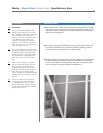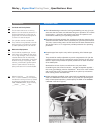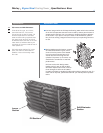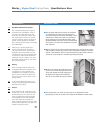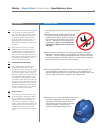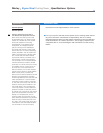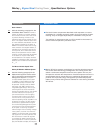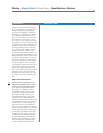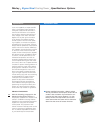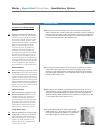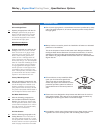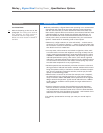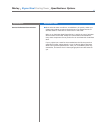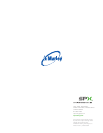
Specifications
Specification Value
Marley
/
Sigma Steel Cooling Tower
/
Specifications: Options
26
Low Noise Tower:
1.1 Add the following at the end of this
paragraph: The cooling tower shall be
quiet operating, and shall produce an
overall level of sound no higher than ____
dBA at the critical location indicated on
the Plans.
■ Sound produced by a Sigma Steel tower operating in an unobstructed
environment will meet all but the most restrictive noise limitations –
and will react favorably to natural attenuation. Where the tower has
been sized to operate within an enclosure, the enclosure itself will have
a damping effect on sound. Sound also declines with distance – by
about 5 or 6 dBA each time the distance doubles. Where noise at a
critical point is likely to exceed an acceptable limit, you have several
options – listed below in ascending order of cost impact:
• Where only a slight reduction in noise will satisfy — and the source
of concern is in a particular direction — merely turning the tower may
be the answer. Less sound emanates from the cased face of the tower
than does from the air intake face.
• In many cases, noise concerns are limited to nighttime, when ambi-
ent noise levels are lower and neighbors are trying to sleep. You can
usually resolve these situations by using two-speed motors in either
1800/900 or 1800/1200 RPM configuration; and operating the fans at
reduced speed without cycling “after hours”. (The natural nighttime
reduction in wet-bulb temperature makes this a very feasible solution
in most areas of the world, but the need to avoid cycling may cause
the cold water temperature to vary significantly.)
• Variable speed drives automatically minimize the tower's noise level
during periods of reduced load and/or reduced ambient without sacri-
ficing the system's ability to maintain a constant cold water tempera-
ture. This is a relatively inexpensive solution, and can pay for itself
quickly in reduced energy costs.
• Where noise is a concern at all times (for example, near a hospital),
the best solution is to oversize the tower so it can operate continu-
ously at reduced (1200 or 900 RPM) motor speed even at the highest
design wet-bulb temperature. Typical sound reductions are 7 dBA at
2/3 fan speed or 10 dBA at 1/2 fan speed, but larger reductions are
often possible.
• Extreme cases may require inlet and discharge sound attenuator
sections; however, the static pressure loss imposed by attenuators
may necessitate an increase in tower size. This is the least desirable
approach because of the significant cost impact – and because of the
obstruction to normal maintenance procedures.
Y
our Marley representative can help you meet your sound require-
ments.




